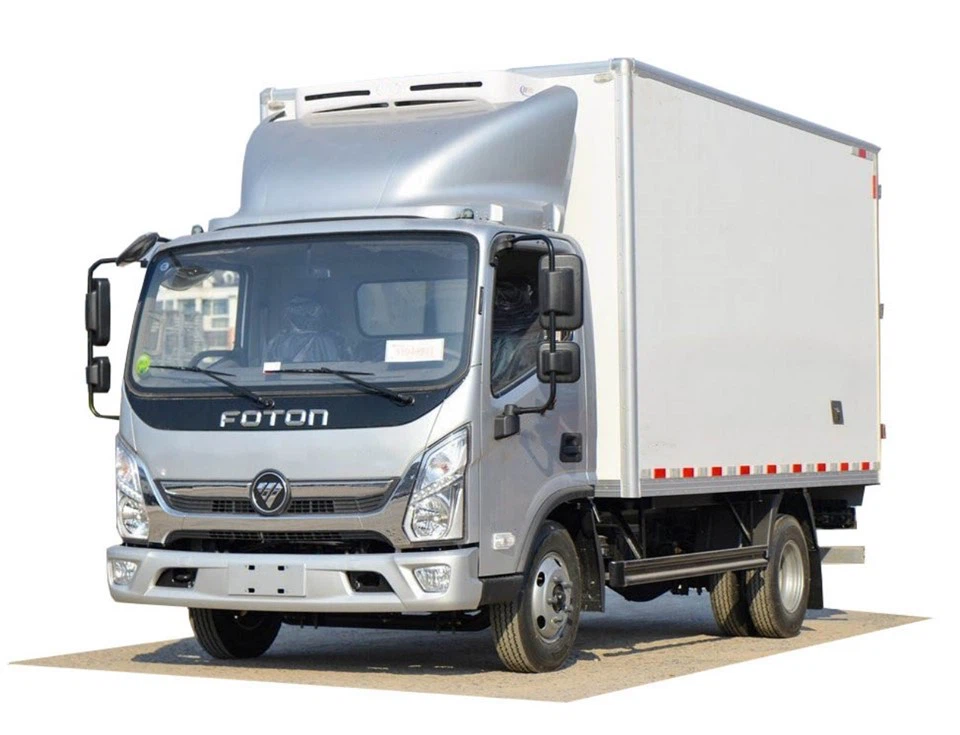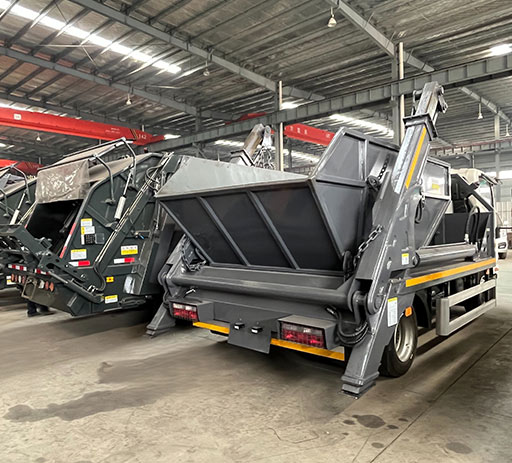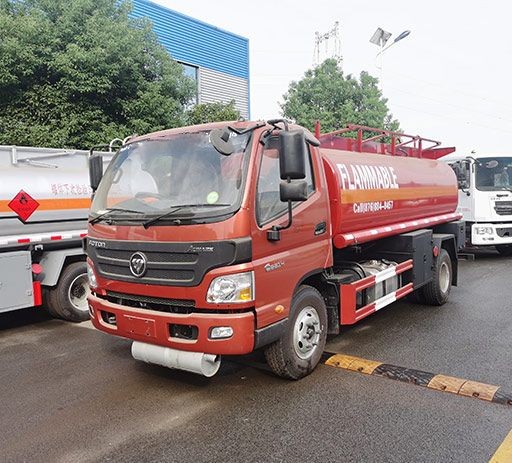Understanding Tanker Truck Volume: Everything You Need to Know

Tanker trucks are vital components of the transportation industry, specifically designed to carry liquids, gases, and other bulk materials. Understanding tanker truck volume is critical for businesses that rely on these vehicles for logistics. In this article, we will explore the various factors that influence tanker truck volume, the different types of tanker trucks available, and practical tips for optimizing their use in your operations.
What is Tanker Truck Volume?
Tanker truck volume refers to the amount of liquid or gas that a tanker truck can carry. The volume is typically measured in gallons or liters, and it varies depending on the type of tanker truck, its specifications, and the materials being transported. Understanding the volume capacity of tanker trucks is essential for efficient logistical planning, ensuring compliance with regulations, and maximizing profitability.
Factors Influencing Tanker Truck Volume
Several factors affect the volume capacity of tanker trucks, including:
- Design and Construction: The design and materials used in the construction of the tanker affect its overall volume. Tanks can be cylindrical, rectangular, or custom-shaped to accommodate specific needs.
- Regulations: Local, state, and federal regulations often dictate the maximum allowable volume for vehicles on public roads. These regulations can vary greatly.
- Pumping Systems: The type of pumping system can influence how much liquid can be loaded and unloaded from the tank, impacting overall cycle times and logistics.
- Material Being Transported: Different liquids and gases have varying densities, which can affect how much can be carried by weight versus volume.
Types of Tanker Trucks
Understanding the different types of tanker trucks is crucial for businesses looking to choose the right vehicle for their operations. Here are some of the most common types:
1. Standard Tanker Trucks
Standard tanker trucks typically range in volume from 5,000 to 11,000 gallons (approximately 19,000 to 42,000 liters). They are commonly used for transporting water, gasoline, and other industrial liquids.
2. Food Grade Tankers
Food grade tankers are designed to carry edible liquids, such as milk and juices. They often have a maximum volume of around 6,000 to 8,000 gallons (approximately 23,000 to 30,000 liters) and adhere to strict sanitary regulations.
3. Chemical Tankers
Chemical tankers are built to transport hazardous materials, including acids and other chemicals. Their volume can vary but generally ranges from 4,000 to 6,000 gallons (approximately 15,000 to 23,000 liters). They are designed with special materials to prevent leaks and contamination.
4. Vacuum Tankers
Vacuum tankers are specialized trucks that can suction and transport liquids, such as sewage and slurries. They commonly have a capacity of about 2,500 to 4,000 gallons (approximately 9,500 to 15,000 liters).
5. LPG Tankers
Liquefied Petroleum Gas (LPG) tankers can carry gases in liquid form at high pressure. Their typical volume ranges between 5,000 and 10,000 gallons (approximately 19,000 to 37,000 liters).
Tankers and Their Volume Capacity: Practical Examples
To better understand how volume capacity impacts operations, let’s take a look at some practical examples.
Example 1: Fuel Distribution
A fuel distribution company operates a fleet that includes standard tanker trucks with a capacity of 9,000 gallons. If the company averages about 400 gallons per delivery, they can schedule up to 22 deliveries per truck per day. This makes it essential for the company to optimize its route planning to maximize the number of deliveries.
Example 2: Milk Transportation
A dairy company uses food-grade tankers with a capacity of 6,500 gallons. By consolidating their routes and using 1-2 trucks strategically, they can increase their efficiency, ensuring that fresh milk reaches the processing plant on schedule, while also minimizing transportation costs.
Example 3: Chemical Delivery
An industrial supplier uses chemical tankers that can safely transport 5,000 gallons of dilute hydrochloric acid. Each delivery requires careful calculations regarding weight limits and routes, as regulations dictate stringent guidelines to ensure public safety.
Regulations and Compliance
Compliance with regulations is paramount for businesses involved in transporting liquids and gases. Here are some key aspects to consider:
Federal Regulations
In the United States, the Department of Transportation (DOT) sets various regulations that tanker truck companies must follow, including:
- Hazmat Regulations: These regulations govern the transport of hazardous materials, dictating how trucks must be equipped and what safety protocols must be in place.
- Weight Restrictions: There are maximum weight limits for tanker trucks on different types of roads, which can affect how much liquid can be transported.
State Regulations
Each state may have additional regulations regarding tanker truck volume, routes, and drivers’ qualifications. It is crucial for companies to be familiar with both federal and state guidelines.
Optimizing Tanker Truck Volume for Your Business
Optimizing the use of tanker truck volume can significantly impact operational efficiency. Here are some tips:
1. Route Planning
Investing in route-planning software can help minimize fuel costs and maximize delivery times. Route optimization ensures that trucks carry maximum loads while minimizing travel distance.
2. Training Drivers
Providing training for drivers on efficient driving techniques can enhance fuel economy and reduce wear and tear on the vehicle. Well-trained drivers are more adept at managing loads and following safety protocols.
3. Regular Maintenance
Regular maintenance checks on tankers can help identify issues that may affect volume capacity or safety, such as leaks or mechanical failures. Keeping trucks in optimal condition can prevent costly downtime and accidents.
4. Real-Time Monitoring
Implementing GPS tracking and monitoring systems can provide real-time data on tanker locations, allowing for better logistics and planning. This ensures that your fleet is operating efficiently and that you remain aware of any potential delays.
The Future of Tanker Trucks: Innovations in Volume Capacity
The tanker truck industry is continuously evolving, with advancements in technology and design aimed at improving volume capacity and efficiency.
1. Alternative Fuels
The use of alternative fuels and electric vehicles is becoming more common in the tanker truck industry. These innovations not only reduce carbon emissions but can also optimize the overall efficiency of logistics operations.
2. Advanced Materials
New materials are being explored for constructing tankers, which can allow for lighter, more durable designs. This can increase the overall volume of products transported without exceeding weight limits.
3. Automation and AI
Artificial intelligence and automation technologies may lead to further enhancements in route planning, vehicle management, and regulatory compliance. Companies that embrace these technologies will likely have a competitive edge in logistics optimization.
FAQs About Tanker Truck Volume
1. What is the average volume capacity of a standard tanker truck?

The average volume capacity of a standard tanker truck ranges from 5,000 to 11,000 gallons (approximately 19,000 to 42,000 liters).
2. Are volume capacities regulated by law?
Yes, both federal and state regulations dictate the maximum allowable volume a tanker truck can transport, often influenced by road types and vehicle specifications.
3. How can I determine the right type of tanker truck for my business?
Assess your specific needs, including the type of material you need to transport, regulatory requirements, and necessary volume capacity. Consulting with a tanker truck specialist can also help guide your decision.
4. How do I ensure compliance with regulations while operating tanker trucks?

Stay educated about both federal and state regulations, provide regular training for drivers, and conduct routine maintenance checks on vehicles. Utilizing software for compliance tracking can be beneficial.
5. What are the risks associated with transporting hazardous materials?

Risks include spills, environmental contamination, and potential accidents. Compliance with Hazmat regulations and thorough driver training can mitigate these risks.
6. How can technology improve tanker truck operations?
Technology can optimize route planning, facilitate real-time monitoring of vehicles, improve maintenance scheduling, and enhance safety protocols, ultimately driving efficiency and productivity.
